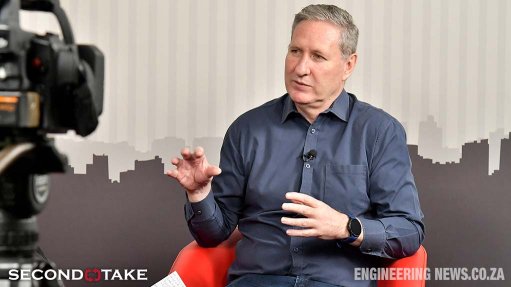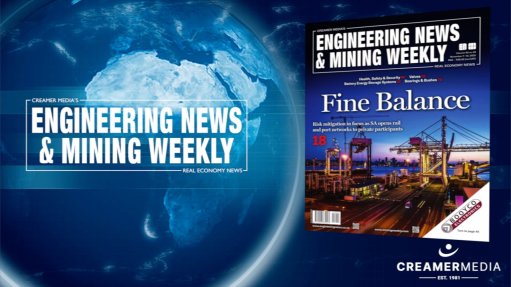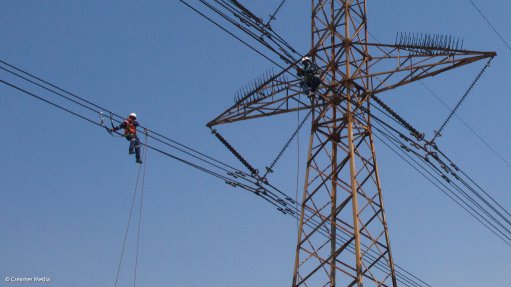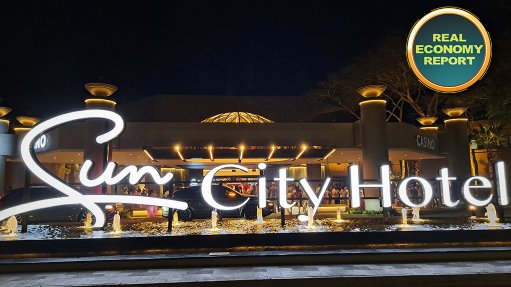Opinion: 'It's time to rebuild trust' . . . hang on just a second
In this article, the National Employers Association of South Africa (Neasa) CEO Gerhard Papenfus responds to an earlier opinion piece authored by the Steel and Engineering Industries Federation of Southern Africa (Seifsa) CEO Lucio Trentini, who called for the industry to rebuild trust and for more constructive engagement between the employer bodies on the Metals and Engineering Industries Bargaining Council (MEIBC).
To even dare to make this call, short on the heels of the recent extension of the MEIBC’s Main Agreement to non-parties (90% of the steel industry), is delusional, and illustrates total ignorance regarding the realities confronting the steel sector small, medium-sized and microenterprises (SMME), the level of distrust and the prevailing anger in the industry.
Seifsa’s attempt to adopt the attributes of a "statesman: bringing “peace and stability” to this industry, is misplaced. Its leadership involved in the decision to extend this Agreement to non-parties, is in no position to play a conciliatory role; from the perspective of SMMEs in the steel sector, the image of Seifsa and its leadership is, to say the least, fundamentally tarnished.
Who is Seifsa?
The almost century-old Seifsa, which focuses solely on the steel industry, is as yet not able to make substantial inroads into the SMME sector. The reason for that is simple: they do not represent the interests of SMMEs.
In a democratic centralised bargaining dispensation, Seifsa would have been a minority voice, serving the interests of their members only. However, an entirely undemocratic provision in the Labour Relations Act (LRA), which, for the purposes of the extension of agreements, allows for employers to be ‘weighed’ according to their number of employees, and not on the basis of being ‘employers’ as such, allows for this oligarchical dispensation (within the MEIBC’s context), that gives Seifsa these disproportionate powers.
Within the context of a country, that would have meant that the more tax you pay, the more your vote would count. Try to sell that to the voters of South Africa, but in the field of centralised bargaining, this is acceptable.
This, together with Seifsa’s relationship with the National Union of Metalworkers of South Africa (Numsa), has given Seifsa prominence and super destructive powers as far as the broader interests of the industry are concerned.
It is this diabolical relationship between Seifsa and Numsa - not only made possible, but encouraged, by the aforementioned undemocratic and probably unconstitutional provision in the LRA, and the consequent role of ‘oligarchs’ in the context of the steel industry - that is the root cause of the distrust in the industry.
No constructive engagement can take place in an environment where the parties are unequally yoked, especially where the inequality is manufactured, not by merit, i.e., a party’s constructive contribution to the industry, but through artificial political intervention, in this case, to promote the interests of trade unions, especially through a mutually beneficial engagement with the ‘oligarchs’, among others with the aim to preserve the economic- / SMME hostile bargaining council dispensation.
As a condition of the settlement of the latest round of negotiations between the ‘oligarchs’, represented by Seifsa, and Numsa, was the proverbial head of the steel sector’s SMMEs (90% of employers in the steel industry) on a platter. The trade-off was simple: betray the industry’s SMMEs for ‘industry-peace’. The extension of their unaffordable agreement (even for themselves), to the industry’s 90% non-parties, was incorporated as a condition of their settlement.
However, we all know that industry-peace manufactured in this manner will be short-lived; it will come back to haunt those who participated in this treacherous, immoral and unethical act.
The invite to industry role players to “wipe the slate clean and start afresh”, while the blood of the victims (the industry’s SMMEs) is still warm, is simply disingenuous. As far as these SMMEs are concerned, “wiping the slate” means withdrawing the current extended agreement and creating a dispensation where parties can negotiate on equal footing. If Seifsa is not prepared to do that, they are merely paying lip-service, once again emphasising that they can indeed not be trusted.
Seifsa’s CEO mentions that government is pinning its hope of an economic revival on the private sector, and even refers to the 64% unemployment rate of South Africans under the age of 24. How does an entry-level wage of R78.00 cost to company (CTC) for a sweeper, or for that matter somebody with no skill or experience, contribute to solving our unemployment disaster? Also, instead of paying attention to the President’s request for lower entry-level wages in order to address the unemployment crisis, they introduced the highest wages, by far, in comparison to all industries. Once again, how can anybody trust them, apart from those who benefit or those who find short-term security within this unhealthy plot?
In an article recently published in the Financial Mail, Seifsa’s CEO is quoted saying that “Neasa continues to peddle for its failure to come up with a better deal”. What nonsense?! Nobody can come up with a “better deal” when Seifsa is around. They are Numsa’s preferred negotiating partners, simply because they are renowned pushovers. There’s no use in even turning up when Seifsa is at the negotiating table; Numsa knows they will get their way with Seifsa and any other negotiating party will soon find itself out in the cold.
According to the same article, Seifsa’s CEO admits that he “finds it difficult to defend an entry-level wage of R55 (R78 CTC) an hour. He concedes this will not entice employers to hire more staff but emphasises that the industry got to this point over 80 years of centralised bargaining”.
The statement that the outrageous wage arrangement in the steel industry is the result of “80 years of centralised bargaining”, is just not true. The MEIBC’s wages are the result of Seifsa’s absolutely poor negotiating record over many years, a ‘brand’ from which they cannot escape; they simply cannot deviate from the industry-destructive path they have embarked upon. Numsa knows this, and that makes Seifsa the industry’s biggest liability.
How else do you explain the fact that the MEIBC wage is 42% higher than the second most expensive industry subjected to centralised bargaining and 70% more than the third most expensive industry - also subjected to centralised bargaining. Incidentally, in the last-mentioned industry, Numsa is the most prominent trade union and yet the entry-level wage is 70% lower. That alone proves that Seifsa’s undeserved power and its weak negotiating abilities, coupled with its self-serving agenda, are the industry’s main threat.
The fact that Seifsa’s CEO refers to the severe battles in the industry over the last twelve years as “rhetoric, play, differing, bickering and quibble”, simply emphasises his ignorance towards the challenges his organisation has created for the industry over many years.
The placement of the article in Engineering News is quite unfortunate. Instead of entering into a private conversation, in which a real solution is sought, a ‘saviour of the industry’ approach is adopted, in this case by the villain. The article also contains a few snide, even derogatory remarks, which are not conducive to opening constructive discussions.
Article Enquiry
Email Article
Save Article
Feedback
To advertise email advertising@creamermedia.co.za or click here
Comments
Press Office
Announcements
What's On
Subscribe to improve your user experience...
Option 1 (equivalent of R125 a month):
Receive a weekly copy of Creamer Media's Engineering News & Mining Weekly magazine
(print copy for those in South Africa and e-magazine for those outside of South Africa)
Receive daily email newsletters
Access to full search results
Access archive of magazine back copies
Access to Projects in Progress
Access to ONE Research Report of your choice in PDF format
Option 2 (equivalent of R375 a month):
All benefits from Option 1
PLUS
Access to Creamer Media's Research Channel Africa for ALL Research Reports, in PDF format, on various industrial and mining sectors
including Electricity; Water; Energy Transition; Hydrogen; Roads, Rail and Ports; Coal; Gold; Platinum; Battery Metals; etc.
Already a subscriber?
Forgotten your password?
Receive weekly copy of Creamer Media's Engineering News & Mining Weekly magazine (print copy for those in South Africa and e-magazine for those outside of South Africa)
➕
Recieve daily email newsletters
➕
Access to full search results
➕
Access archive of magazine back copies
➕
Access to Projects in Progress
➕
Access to ONE Research Report of your choice in PDF format
RESEARCH CHANNEL AFRICA
R4500 (equivalent of R375 a month)
SUBSCRIBEAll benefits from Option 1
➕
Access to Creamer Media's Research Channel Africa for ALL Research Reports on various industrial and mining sectors, in PDF format, including on:
Electricity
➕
Water
➕
Energy Transition
➕
Hydrogen
➕
Roads, Rail and Ports
➕
Coal
➕
Gold
➕
Platinum
➕
Battery Metals
➕
etc.
Receive all benefits from Option 1 or Option 2 delivered to numerous people at your company
➕
Multiple User names and Passwords for simultaneous log-ins
➕
Intranet integration access to all in your organisation


















